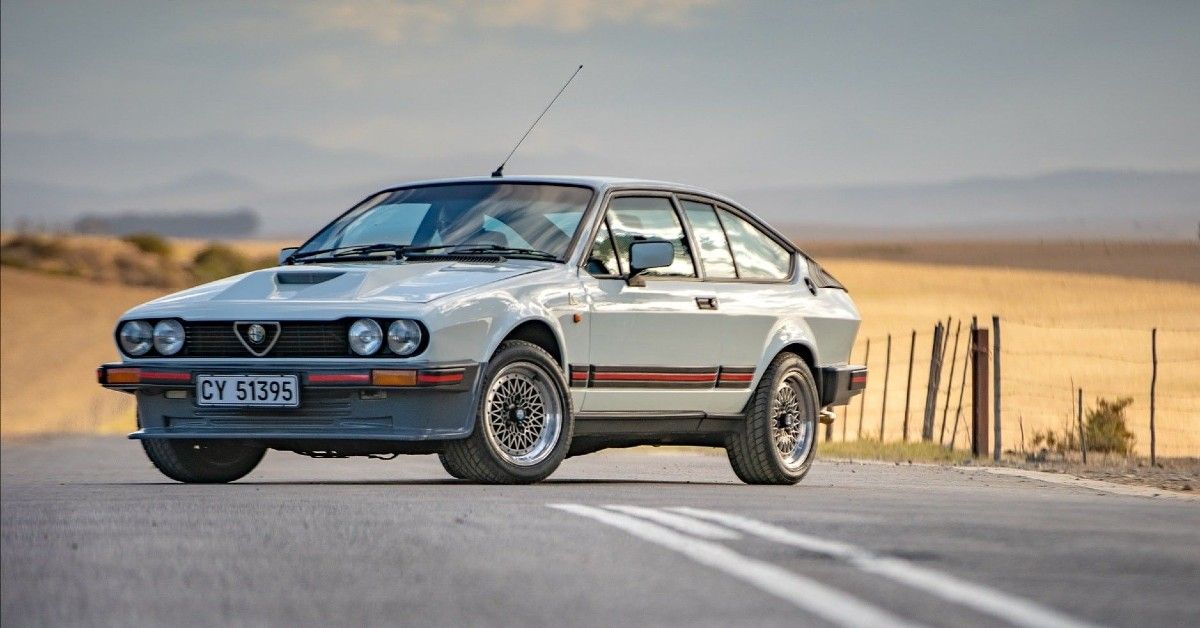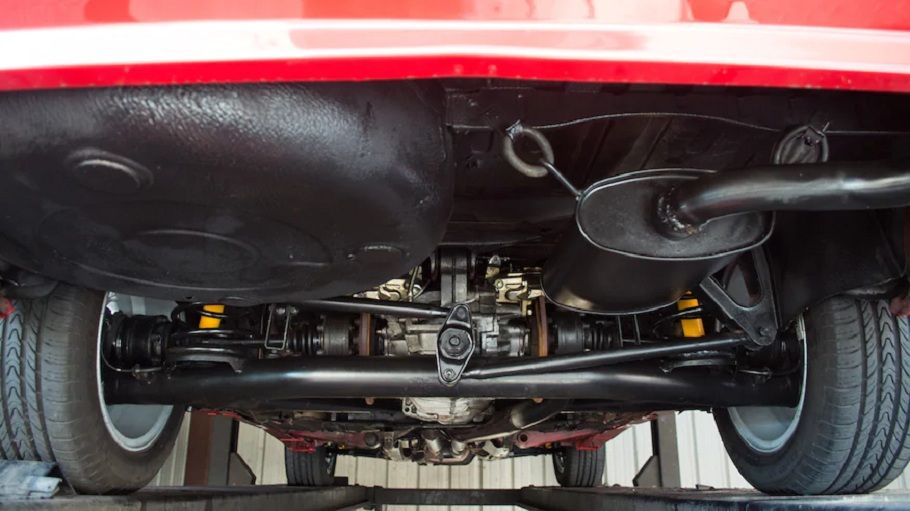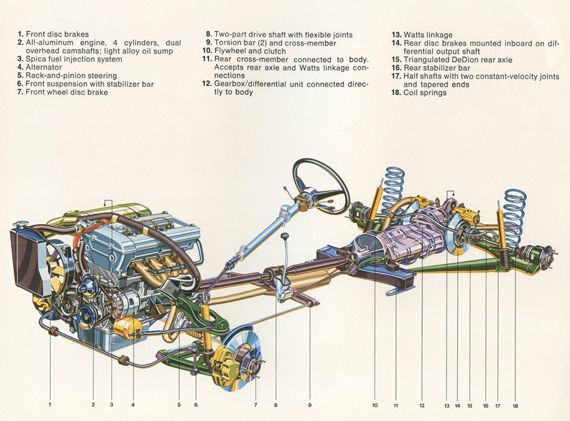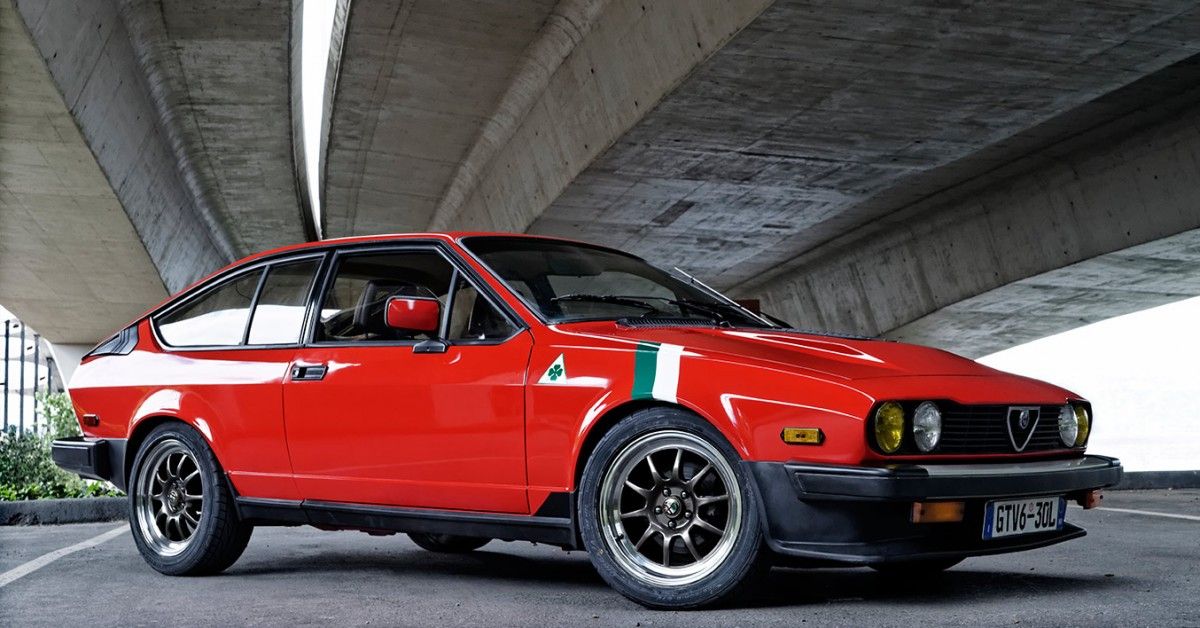For most enthusiasts, rear-wheel drive is their first choice, but for Alfa Romeo enthusiasts rear-wheel drive means so much more.
Between 1972 and 1994 the transaxle dominated their lineup, with several models adopting this unique configuration. The design was based on their dominant Formula 1 cars of the 40s, with their engine up front sending power to a rear-mounted transaxle (transmission, axle and differential combined). In theory, this would give the car a perfect 50/50 weight distribution by balancing the weight of the engine up front and the weight of the transaxle at the rear, improving handling and road-holding.
As time went on, these transaxle cars proved to be some of the best handling cars of their time, but the design was far from perfect.
De Dion Tube
It stands to reason that a unique driveline will require an equally unique suspension, that unique suspension came from the self same GP car.
Although the de Dion tube, even in the 70s, was far from new, it was the perfect fit for the transaxle layout. The U-shaped design meant the rear wheels could move independently, yet still maintain maximum grip. It was the perfect companion for the 50/50 weight distribution, giving the car unparalleled handling characteristics at the time. Even though the front suspension was a far less revolutionary torsion-bar setup, it didn’t matter much at all as long as the front end stayed within the weight parameter set by the rear half of the drivetrain.
At the time this was put into development, the Alfasud project was in full swing and most funds were diverted south, so development stalled. In the end it took far longer than it should have to get the first transaxle equipped Alfetta into production, then, when it did arrive in 1972 (a full five years after the project started in 1967) it knocked the socks off of every automotive journalist that tested it.
Two-Piece Propshaft
As is the case with anything in life, there was a trade-off. In the case of the transaxle that trade-off comes in the form of a propshaft that needs to spin at engine speed, which causes severe vibrations that will be felt most at high rpm.
Earlier Ferrari transaxle cars used a torque tube for their propshafts to solve the issue, but in true Alfa fashion they opted for a more affordable solution. They divided the propshaft into two sections, which were joined by a rubber coupling. This solution was less a solution and more of a remedy, more development funds may have yielded different results, but the budget was set and vibrations were the order of the day once you hit the rev ceiling.
Vibrations that were at times so severe drivers would get put off, thinking something was wrong with the car, a trademark Alfa quirk if you will. For those who were prepared to deal with some of the worst NVH known to man at the top end of the rev range, the rest was near perfect. Handling was better than any other 70s family car, even better than most sports cars of the time, and the ride was compliant thanks to the torsion bars in the front and de Dion tube at the rear.
Engineering Marvel
The rear mounted transaxle is a totally unconventional solution to a pretty conventional problem, and that is why it is an incredible engineering accomplishment.
It is easily justified to come up with an alternative approach like this in the world of motorsport, where grip and speed are worth pursuing if it means compromising other areas. In the world of mass-produced cars this is truly a wild idea, it is more expensive to produce and involves removing an element of comfort most manufacturers treat as sacred, even if it is only briefly and only on occasion, most carmakers would not be willing to dive down this particular rabbit hole.
Only one manufacturer really pursued this technology, and although it might have been eclipsed by other engineering solutions that didn’t stop Alfa from making hundreds of thousands of different transaxle cars over the years, some of which are more desirable than others, but all share this unique attribute. They, themselves would eventually move almost exclusively to a front-drive platform by the 90s after Fiat took over and started making more conventional engineering decisions, decisions that rather ironically still yielded unconventional issues along the way. Alfa will always be Alfa, no matter who owns them, or what layout they have. It is, though, in our opinion that the transaxles are still the most authentic Alfa Romeos money can buy.




